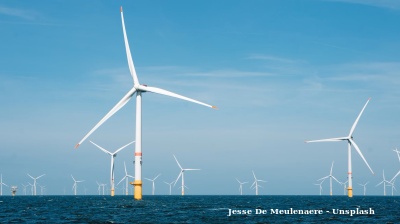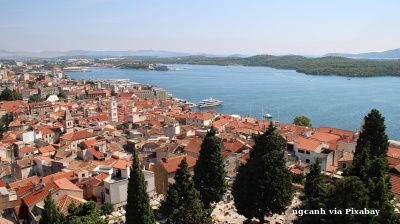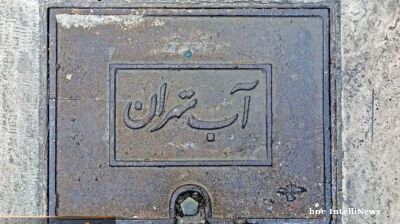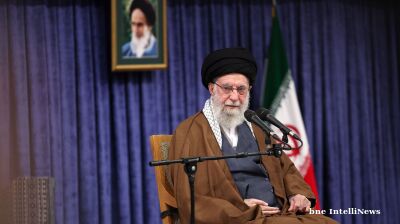Temperatures have exceeded 40 degrees Celsius (104 Fahrenheit) at 170 weather stations across Iran on July 20, state-controlled Tasnim News Agency reported.
The organisation's data revealed a stark 40-degree temperature difference between the coolest and hottest regions over the past 24 hours.
The weather announcement came ahead of a social media post from Iran’s president-elect Masoud Pezeshkian late on July 20. He said that industry should be moved out of Tehran to the coast to reduce the strain on utilities.
"We need to move production out of Tehran, bring it closer to the sea, to a place where water and electricity supply won't be a problem in the future, a location where the transit of raw materials and export of products can be done with minimum cost and time," Pezeshkian wrote.

Ardabil Airport in the northwest recorded the lowest temperature at 9.8 C (49.6 F), while Susa (Shoosh) in Khuzestan province reached a scorching 50 C (122 F), making it the country's hottest city.
"We're seeing unprecedented temperature variations across Iran," said a spokesperson from the National Centre for Forecasting and Crisis Management of Weather Hazards at the National Meteorological Organisation. "This extreme range poses significant challenges for both urban and rural areas," they added.
Amid the heatwave, sporadic thunderstorms occurred in some regions. The heaviest rainfall was recorded in Sardash Bashagard, Hormozgan province, with 26.6 millimetres (1 inch), marking its wettest day this summer.
The National Centre for Weather Forecasting and Crisis Management warned of intensifying rainfall in parts of the country over the next two days as temperatures are set to remain high in several locations.
An amber alert was issued for northwestern regions, cautioning against potential flash floods, reduced visibility, and rockslides in mountainous areas.
Authorities advised against travel in mountainous regions and urged the public to avoid camping near riverbeds following a recent spate of flash floods in the Alborz mountain range killing several people in recent weeks.
The governor of Iran's southwestern Khuzestan province reported July 20 that electricity consumption hit a record 9,000MW this summer, calling the figure “unprecedented.”
Ali Akbar Hosseini Mehrab, speaking during a visit to the province's power distribution control centre, urged residents to reduce electricity usage to ensure grid stability.
“Consumption must decrease to guarantee the network's reliability,” Mehrab said, noting that peak demand now exceeds the province's generation capacity.
The governor acknowledged recent power outages in some areas, apologising to residents while praising utility workers' efforts to maintain service in extreme heat.
The Iranian Red Crescent Society has also now set up cooling centres in major cities. It is distributing water in areas hit hardest by the heatwave as it continues to bake parts of the country.
On July 19, neighbouring Iraq’s weather monitoring services recorded 50 Celsius in several regions across the country.
Baghdad also experienced extreme heat, reaching up to 47 degrees Celsius. Erbil and Dohuk in the north will be relatively cooler but still hot, with temperatures of 43 and 42 degrees Celsius, respectively.
Southern areas in Iran close to the Persian Gulf also have the added complexity of humidity, increasing strain and putting extra demand on the local electricity grid, which is currently failing in several cities.
Earlier on July 17, Dubai reported that it had seen record so-called “humidex” records "feels like" temperature soaring to 62 Celsius (143.6 Fahrenheit).
bneGREEN

Malaysia–Vietnam offshore wind project to deliver 2,000 MW by 2034, strengthening regional green energy links
Malaysia’s upcoming offshore wind project connecting Vietnam to Peninsular Malaysia is expected to generate up to 2,000 megawatts (MW) of clean energy by 2034, marking a major step in the nation’s renewable energy expansion

EBRD invests €16.8mn in Croatia’s first large-scale battery storage and virtual power plant
Development bank to take its first equity stake in a standalone merchant storage project.

Kyrgyzstan says neighbours “upset” by country’s lack of water
“This year we were supposed to overcome shortages, but instead, they have intensified,” deputy head of cabinet tells Uzbekistan and Kazakhstan.

EXPLAINER: What is the EU’s CBAM and how will it affect global trade from 2026?
The European Union’s Carbon Border Adjustment Mechanism (CBAM) will enter its full operational phase on January 1, 2026, marking a major shift in global climate and trade policy.




